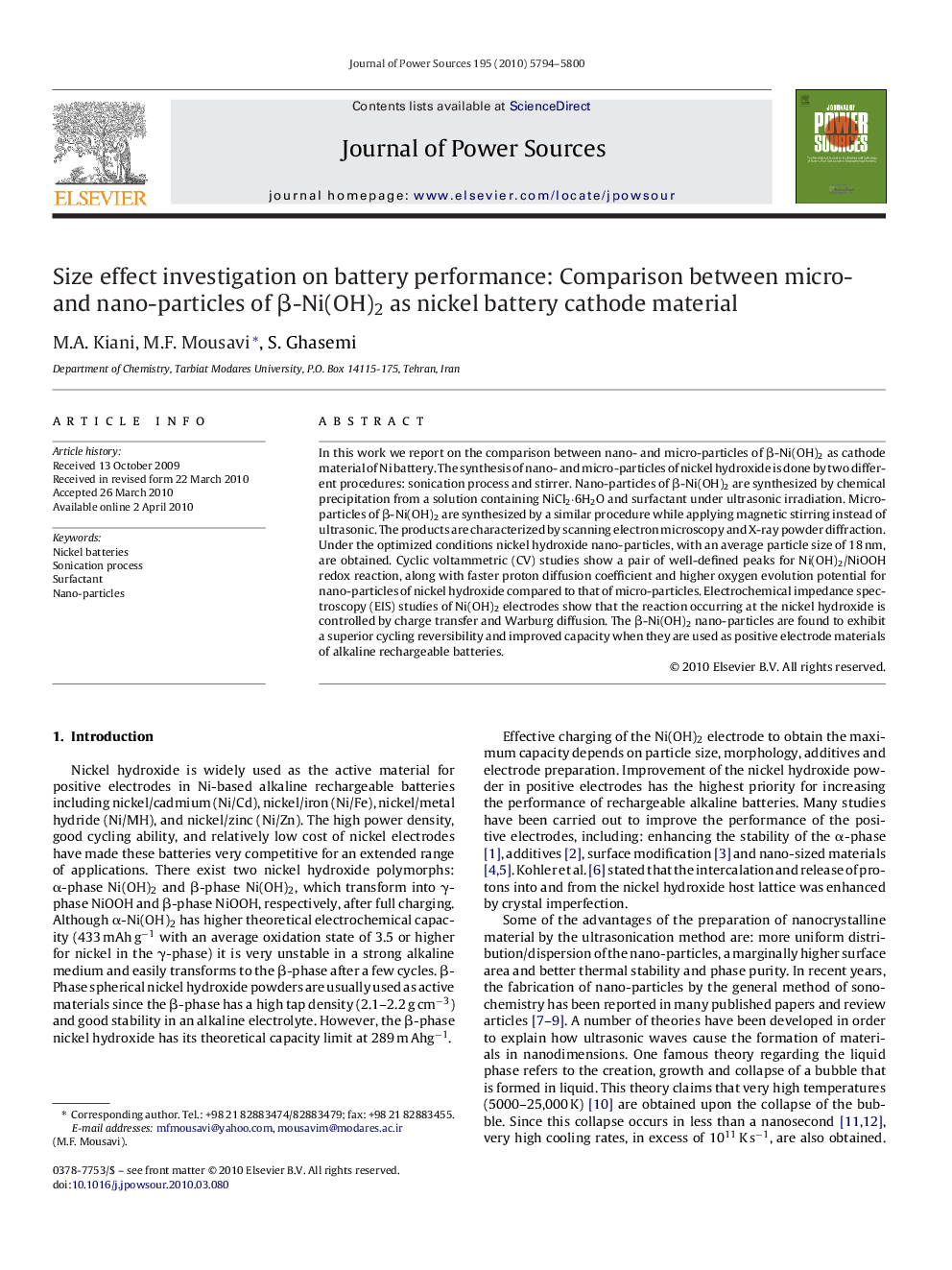| Article ID | Journal | Published Year | Pages | File Type |
|---|---|---|---|---|
| 1293749 | Journal of Power Sources | 2010 | 7 Pages |
In this work we report on the comparison between nano- and micro-particles of β-Ni(OH)2 as cathode material of Ni battery. The synthesis of nano- and micro-particles of nickel hydroxide is done by two different procedures: sonication process and stirrer. Nano-particles of β-Ni(OH)2 are synthesized by chemical precipitation from a solution containing NiCl2·6H2O and surfactant under ultrasonic irradiation. Micro-particles of β-Ni(OH)2 are synthesized by a similar procedure while applying magnetic stirring instead of ultrasonic. The products are characterized by scanning electron microscopy and X-ray powder diffraction. Under the optimized conditions nickel hydroxide nano-particles, with an average particle size of 18 nm, are obtained. Cyclic voltammetric (CV) studies show a pair of well-defined peaks for Ni(OH)2/NiOOH redox reaction, along with faster proton diffusion coefficient and higher oxygen evolution potential for nano-particles of nickel hydroxide compared to that of micro-particles. Electrochemical impedance spectroscopy (EIS) studies of Ni(OH)2 electrodes show that the reaction occurring at the nickel hydroxide is controlled by charge transfer and Warburg diffusion. The β-Ni(OH)2 nano-particles are found to exhibit a superior cycling reversibility and improved capacity when they are used as positive electrode materials of alkaline rechargeable batteries.
